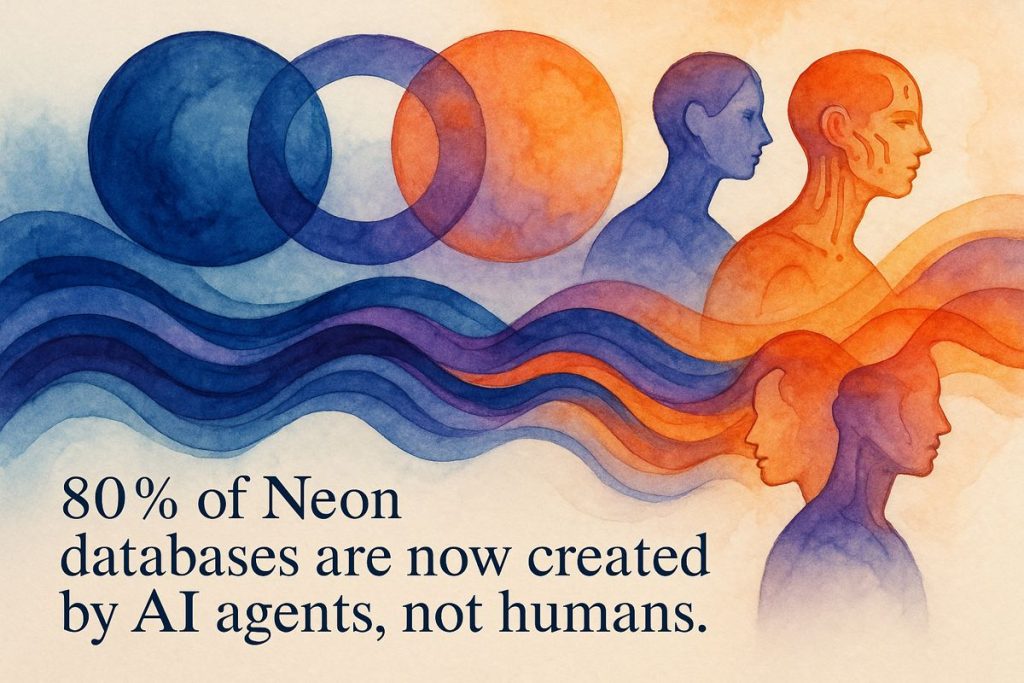Databricks bought Neon for $1 billion to combine fast, cloud-based Postgres databases with powerful AI analytics. With Neon, AI agents can quickly create and manage databases in seconds, making old data silos and infrastructure worries vanish. Now, databases are spun up by software, not people, and only paid for when used—letting companies move faster and smarter. This big move is shaking up the cloud database world, pushing everyone to think in an AI-first, flexible way. The future is clear: smart machines are calling the shots in data, and humans are watching the magic happen.
Why did Databricks acquire Neon, and what does it mean for cloud databases?
Databricks acquired Neon for $1 billion to unify transactional and analytical data in the cloud. Neon’s serverless, cloud-native PostgreSQL lets AI agents rapidly spin up and manage databases, eliminating infrastructure headaches and enabling scalable, usage-based, AI-driven data workflows for modern cloud applications.
The Surreal Convergence: Databricks Buys Neon
Picture this: It’s May 2025, and somewhere between the fizzy hum of startup optimism and the vast tundra of enterprise data, Databricks—already a household name in AI-powered analytics—drops a cool $1 billion on Neon. Neon, for the uninitiated, is like the Tesla Roadster of serverless PostgreSQL: cloud-native, blisteringly fast, and so hands-off that even your code can order up a fresh database before you’ve finished your espresso.
I must admit, when I first heard the news, I did a double-take. Hadn’t we been here before, with big platforms snapping up niche database innovators? But a closer look revealed something fresh. This isn’t just classic consolidation; this is Databricks betting the farm that the future of data is AI-native, transient, and as frictionless as popping bubble wrap. There’s a faint scent of ozone—a metaphor, not a hallucination—wafting off Neon’s hyperspectral approach to cloud workloads.
And honestly, who could blame them? The world is stampeding toward AI-powered automation, and the old silos—transactional here, analytical there—are crumbling like a week-old croissant left out at a hackathon.
Why This Marriage Matters (And What Neon Brings to the Table)
Let’s get concrete. Databricks wants to unify transactional (OLTP) and analytical (OLAP) data, which traditionally have lived in separate, occasionally grumpy, systems. The old way left most companies with operational whiplash and data silos thick as Siberian permafrost. With Neon’s serverless Postgres—fully cloud-native and able to spin up fresh instances in under 500 milliseconds—Databricks can now offer developers a kind of Star Trek transporter for databases. Blink, and it’s done.
Here’s where the magic clicks: Neon isn’t just another managed service. It completely abstracts away infrastructure worries, letting both humans and AI agents spin up, clone, or trash databases at a velocity that would make your DBA reach for smelling salts. That’s not illustrative—it’s real. Over 80% of new databases on Neon are now provisioned by AI agents, not people. Yes, you read that right: the robots are ordering databases for themselves, and we’re just along for the ride.
I remember the first time I used Neon’s branching feature. It was a Tuesday, I believe—I’d spilled coffee on my desk (predictably), but I was able to fork an entire production dataset in seconds for a risky schema experiment. No more holding my breath while running migrations on a live instance. Relief mingled with a pinch of awe—that’s the texture of modern engineering.
The New Rhythm of Machine-Speed Workflows
AI agents are changing the cadence of database management. Neon’s design—stateless compute nodes, a dedicated “Pageserver” for storage, and “Safekeepers” for bulletproof write-ahead logging—means you get elasticity and reliability, whether you’re crunching genomics data or tracking the labyrinthine trades of Wall Street quants. The separation of compute and storage isn’t just technical jargon; it’s what lets you scale up, down, or sideways without waking up in a cold sweat.
But the biggest plot twist? The pricing model. Neon’s strictly usage-based approach means you only pay for what you actually consume—a paradigm critical for fast-moving AI agents that might spin up thousands of ephemeral databases, each living no longer than a mayfly in July. Imagine the sound of a thousand databases being born and dying within minutes—almost musical, if you’re into that sort of thing.
I had to stop and ask myself: are we ready for a world where our software is more ephemeral than our attention spans? As a younger engineer, I once over-provisioned a cluster for a weekend hackathon, only to discover on Monday that I’d spent triple our pizza budget on idle compute. Now, with Neon’s model, that sort of slip-up feels almost quaint.
Strategic Ripples: Open Source, Competition, and the Cloud Colosseum
Let’s zoom out. The global database market has ballooned past $100 billion, with open-source warhorses like PostgreSQL galloping at the front. In the US alone, six public companies have built billion-dollar fortresses on database technology. Enter Databricks, flush with a $15 billion financing round, muscling into the transactional space just as Snowflake buys Crunchy Data—a move worthy of a chessboard in a Dostoevsky novel.
This acquisition isn’t just about Databricks and Neon. It’s about reshaping the rules of engagement for cloud-native data platforms, with hyperspectral vision for the future: programmable, elastic, and AI-first. The pace is dizzying, almost as if the industry has collectively downed a triple espresso and decided to throw out its legacy playbooks.
And the personalities behind the curtain? Ali Ghodsi, Databricks’ CEO, summed up the zeitgeist:
“The era of AI-native, agent-driven applications is reshaping what a database must do. Neon proves it: Four out of every five databases on their platform are spun up by code, not humans.” (Databricks Blog)
Nikita Shamgunov, Neon’s CEO, echoed this, noting how their architecture anticipated the needs of AI-native workflows—and how, frankly, even they were caught a little off-guard by the speed of adoption.
The Road Ahead: Who Really Runs the Databases Now?
So, where does this all lead? For developers, it’s a new
